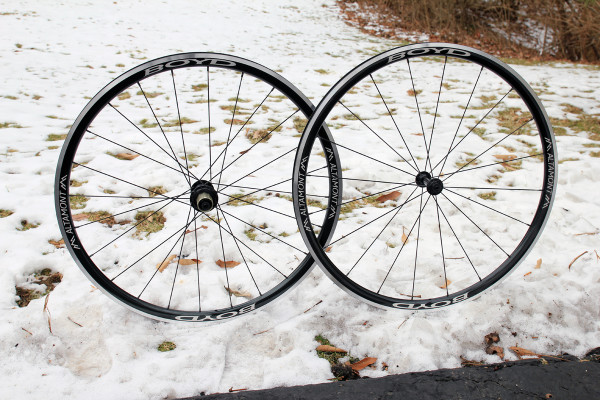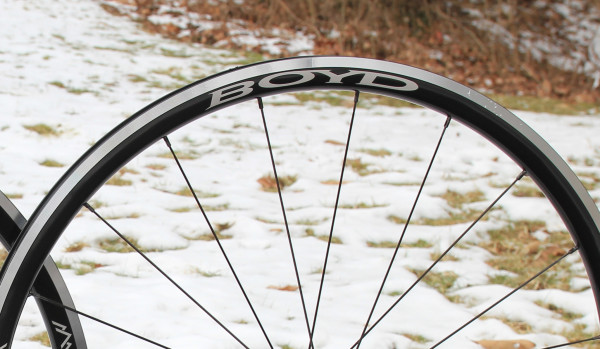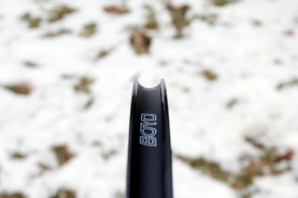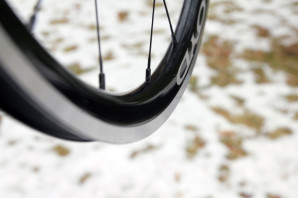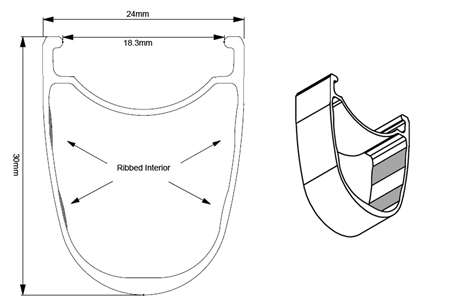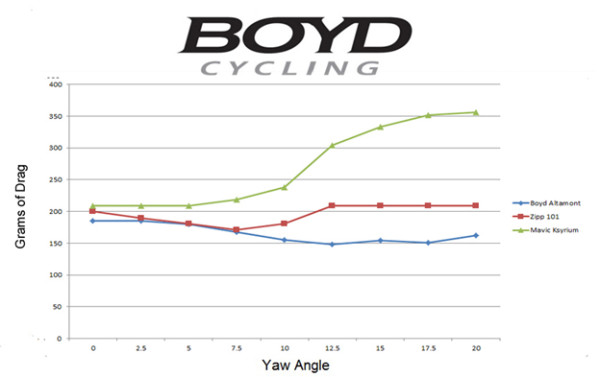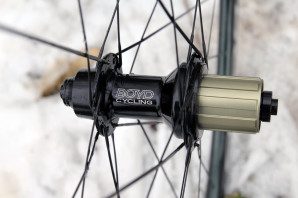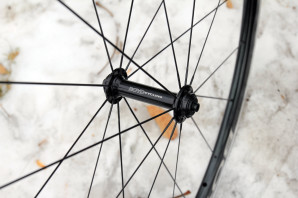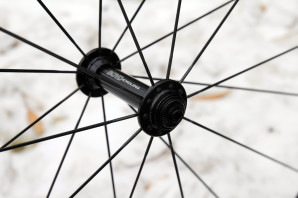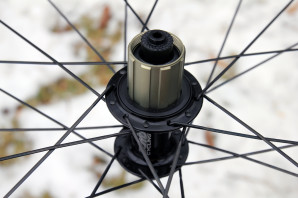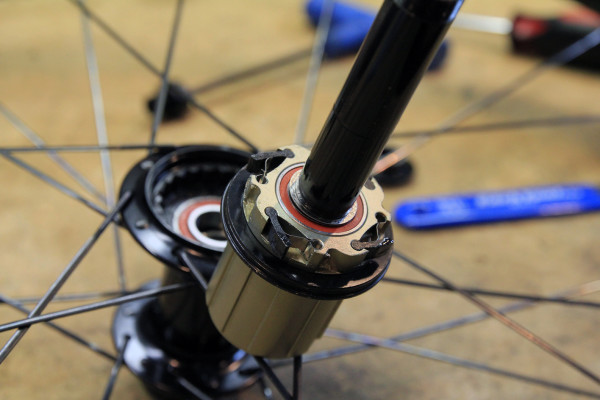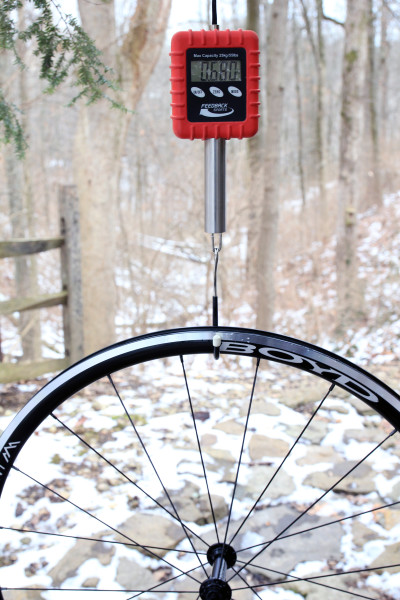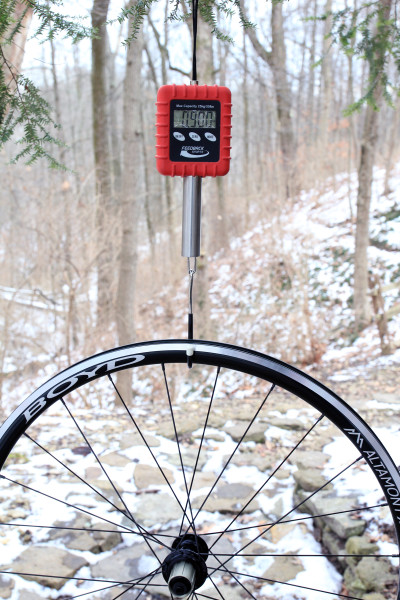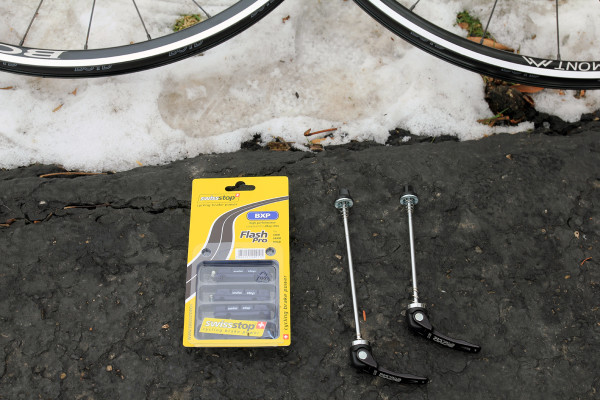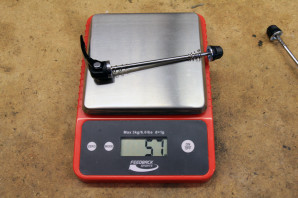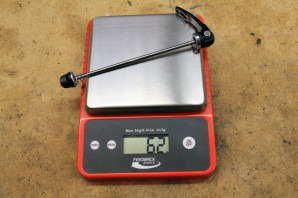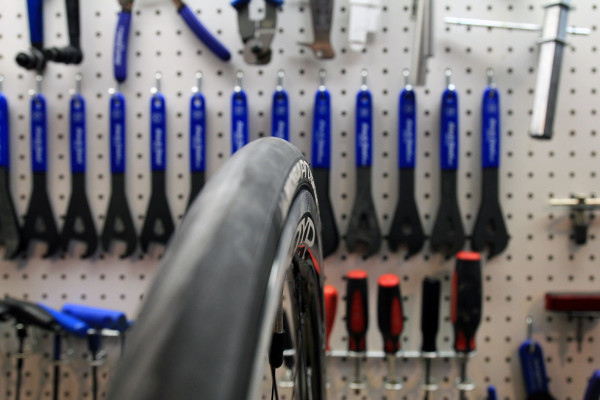Building on their Vitesse wheelset, Boyd is back in town with a new aluminum clincher. It’s wider, deeper, more stiff and more aerodynamic – all good things when it comes to your wheels, and yet, they’ve managed to keep the retail price under $700. If you’re looking for an aluminum wheelset that offers higher performance, Boyd’s new Altamont wheels are pretty intriguing. Named after the road that goes up and over Paris Mountain in Greenville, SC, the Altamonts have been tested in Boyd’s backyard.
Climb the high mountain to learn more.
When you first check out the Altamont, the burly rim is the first thing that catches your eye. It’s wide, tall, and has a round profile that looks unique for an aluminum clincher. The rims are a pinned and sleeved design with a machined brake track. If you like the logos the good news is that they are laser etched to the rim surface so there are no stickers to peel. If you don’t like the logos, well…
The secret to the stiffness of the Altamont’s rim is in the riblets. The ribbed inner walls of the rim are supposed to drastically improve overall stiffness while helping to keep the weight down to 475g. Built with a 24mm external width and 18.3mm internal width the Altamont offers a great footprint for the tire with a very nice transition from the sidewall to the brake track. In addition to the 30mm tall rim, aerodynamics are further improved by designing the rim so that when the brake track is machined down, it is the same height as the rest of the rim.
Using their own wind tunnel testing data plus data from Cycling Power Lab for a Zipp 101 and Mavic Ksyrium RS, Boyd contends that their wheel is more aerodyamic at almost every yaw angle.
At the center of the Altamonts are Boyd’s hubs which use widely spaced bearings and flanges to get the most stiffness out of the design. The hubs feature a traditional flange design with j-bend spokes in a few options, and in 10 or 11 speed compatible freehubs.
Boyd offers three spoking versions of the wheels based on your weight. Under 180 lbs? Then you can use the 20/24h version seen here. Those who are 180-240 lbs should look into the 24/28h version, though if you are 220 lbs or over you should probably think about the 28/32h versions which don’t have a weight limit. Boyd’s thinking is that they can offer similar performance for riders at any weight with multiple options. All wheels are built with Sapim CX Ray j-bend spokes held in place with Sapim SecureLock Brass nipples with a radial pattern on the front, and 2 cross on both sides for the rear. The overbuilt 220+ wheelset uses a 2x on the front and 3x on both sides for the rear.
20/24 spoke count – $650USD
24/28 spoke count – $670USD
28/32 spoke count – $690USD
Boyd puts a lot of emphasis on their wheel builds, as do many other companies with hand built wheels. All wheels are built up in their Greenville, SC facility by their trained wheel builders with each wheel started and finished by the same builder.
Inside the rear hub is a 4 pawl freehub with individual leaf springs for each pawl. The Freehub runs on a large axle that is secured with a 5mm allen end cap, just past a preload adjuster ring that is tightened with a 22mm cone wrench.
Without rim strips or skewers, the 20h front wheel weighs 680g and the 24h rear wheel weighs 900g for a 1580g weight for the set.
Our test set included rim strips, nice Boyd Internal cam skewers, and a set of Swissstop Flash Pro brake pads. Skewers came in at 119g for the pair.
First Impressions:
It may be a bit icy out, but that didn’t stop me from getting out for a quick spin on the Altamont wheels. A pair of Michelin Pro 4 tires in 23mm were installed, which measured 23.4mm fully inflated – off to a good start. The tires were tight on the rim, but I was able to install them without tools.
After opening up the brakes (these rims are indeed wide), I took off. True to their word, the wheels needed nothing out of the box and were perfectly true and round, and did not pop or ping on the first ride. The first thing that really hits you is how sturdy the wheels feel, not just stiff, but they really feel planted to the road. Interestingly enough, the last wheels that were on this bike were a pair of Zipp 101s, and while the Altamonts feel much stiffer than the Zipps, the first ride left me feeling like the Zipps were a little faster. Of course, today was not a good day to make those comparisons as it was cold and the wheels have different tires, etc. so a longer test with more even conditions will be needed. One thing is for sure though, if you are hard on your wheels and want something stiff, from first impressions the Altamont will not let you down.
